-
 Riding the Highs and Lows of the Conduction System Pacing Wave—Our Experience
Riding the Highs and Lows of the Conduction System Pacing Wave—Our Experience -
 Prevalence and Correlates of Dilated and Non-Dilated Left Ventricular Cardiomyopathy in Transfusion-Dependent Thalassemia: Data from a National, Multicenter, Observational Registry
Prevalence and Correlates of Dilated and Non-Dilated Left Ventricular Cardiomyopathy in Transfusion-Dependent Thalassemia: Data from a National, Multicenter, Observational Registry -
 Myocardial Infarction in the Young: Aetiology, Emerging Risk Factors, and the Role of Novel Biomarkers
Myocardial Infarction in the Young: Aetiology, Emerging Risk Factors, and the Role of Novel Biomarkers -
 Not All SAVR Are Created Equal: All the Approaches Available for Surgical Aortic Valve Replacement
Not All SAVR Are Created Equal: All the Approaches Available for Surgical Aortic Valve Replacement
Journal Description
Journal of Cardiovascular Development and Disease
Journal of Cardiovascular Development and Disease
is an international, scientific, peer-reviewed, open access journal on cardiovascular medicine published monthly online by MDPI.
- Open Access— free for readers, with article processing charges (APC) paid by authors or their institutions.
- High Visibility: indexed within Scopus, SCIE (Web of Science), PubMed, PMC, Embase, CAPlus / SciFinder, and other databases.
- Journal Rank: JCR - Q2 (Cardiac and Cardiovascular Systems) / CiteScore - Q2 (General Pharmacology, Toxicology and Pharmaceutics )
- Rapid Publication: manuscripts are peer-reviewed and a first decision is provided to authors approximately 25.7 days after submission; acceptance to publication is undertaken in 2.8 days (median values for papers published in this journal in the second half of 2024).
- Recognition of Reviewers: reviewers who provide timely, thorough peer-review reports receive vouchers entitling them to a discount on the APC of their next publication in any MDPI journal, in appreciation of the work done.
Impact Factor:
2.4 (2023);
5-Year Impact Factor:
2.6 (2023)
Latest Articles
Quality of Life in Adults with Tetralogy of Fallot: Physical Limitations and Psychological Well-Being
J. Cardiovasc. Dev. Dis. 2025, 12(5), 178; https://doi.org/10.3390/jcdd12050178 - 7 May 2025
Abstract
Background: Advances in medical care of patients with tetralogy of Fallot (ToF) have significantly altered the natural course of the disease by prolonging life. Thus, our focus has now shifted to exploring the health-related quality of life (HRQoL) of those patients. This study
[...] Read more.
Background: Advances in medical care of patients with tetralogy of Fallot (ToF) have significantly altered the natural course of the disease by prolonging life. Thus, our focus has now shifted to exploring the health-related quality of life (HRQoL) of those patients. This study sought to explore the HRQoL of adult patients operated on for ToF using two validated instruments—the SF-36 and EQ-5D—that highlight both physical and mental aspects of the disease. Methods: A total of 115 individuals (53 ToF patients and 60 healthy controls) were recruited for the purposes of this study. HRQoL was assessed through the SF-36 and EQ-5D instruments. Comparisons were made between ToF patients and controls with subgroup analyses based on sex and age. Results: ToF patients reported significantly poorer HRQoL in the physical domains, namely Physical Functioning, Role Physical, General Health, and Physical Component Summary of the SF-36 when compared to controls (p < 0.05). Interestingly, there was a trend towards lower Bodily Pain and better Vitality scores in ToF subjects. Age influenced HRQoL, with older respondents rating their physical health lower than younger patients and controls (p < 0.05). EQ-5D VAS scores indicated that ToF patients perceived their overall health worse than controls (80.02 vs. 86.92, p < 0.001), with Anxiety/Depression being the most frequently reported problem (45.3%). Controls reported better HRQoL than ToF patients across all SF-36 domains in both health states (EQ-5D = 1 and EQ-5D > 1), except for Bodily Pain and Vitality in EQ-5D = 1. Significant differences were observed in Physical Functioning, Role Physical, General Health, Vitality, and Physical Component Score. Notably, ToF patients with EQ-5D = 1 showed unexpectedly higher Vitality scores than controls; however, this advantage diminished significantly in the EQ-5D > 1 group. Conclusions: Adult ToF survivors experience significant physical limitations as expected, while mental health seems to remain relatively unaffected compared to healthy peers. These findings underscore the importance of HRQoL assessment in patients with congenital heart disease and the need for disease-specific HRQoL instruments.
Full article
(This article belongs to the Section Pediatric Cardiology and Congenital Heart Disease)
Open AccessReview
Vectorcardiography in CRT: What We Know and What There Is to Learn
by
Muhammet Dural, Frederieke Eerenberg, Karin C. Smits, Uyên Châu Nguyên, Kevin Vernooy and Antonius M. W. van Stipdonk
J. Cardiovasc. Dev. Dis. 2025, 12(5), 177; https://doi.org/10.3390/jcdd12050177 - 7 May 2025
Abstract
►▼
Show Figures
Vectorcardiography (VCG) is an electrophysiological investigation technique, giving supplementary information about the electrical activation of the heart, compared to traditional 12-lead electrocardiography (ECG). Whereas the 12-lead ECG has found its way into global clinical cardiology practice in numerous cardiac pathophysiological instances, VCG has
[...] Read more.
Vectorcardiography (VCG) is an electrophysiological investigation technique, giving supplementary information about the electrical activation of the heart, compared to traditional 12-lead electrocardiography (ECG). Whereas the 12-lead ECG has found its way into global clinical cardiology practice in numerous cardiac pathophysiological instances, VCG has not. In an investigation of the electrical activation of the heart in cardiac resynchronization therapy (CRT), in order to understand the baseline pathology in potentially eligible patients, and to understand and optimize CRT-derived paced activation of the heart in the therapy’s recipients, all of these aspects are essential to the success of the therapy. Due to a consistently present group of non-responders in CRT, VCG has gained interest as a potential improvement in this field. This review comprehensively summarizes the contemporary evidence for the additional value of VCG in CRT, as well as current deficiencies in evidence, to support its implementation in global practice in addition to, or as a substitution for, traditional 12-lead ECG.
Full article
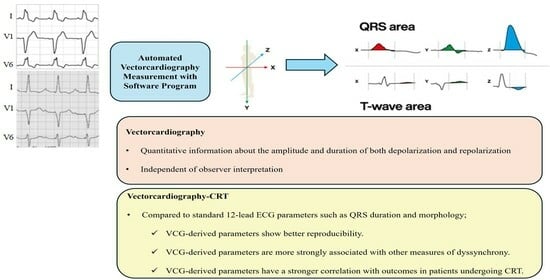
Graphical abstract
Open AccessReview
Leaving Nothing Behind: Expanding the Clinical Frontiers of Drug-Coated Balloon Angioplasty in Coronary Artery Disease
by
Marcello Marchetta, Stefano Sasso, Vincenzo Paragliola, Valerio Maffi, Gaetano Chiricolo, Gianluca Massaro, Giulio Russo, Daniela Benedetto, Saverio Muscoli, Giuseppe Colonna, Alessandro Mandurino Mirizzi, Bernardo Cortese, Giuseppe Massimo Sangiorgi and Giuseppe Andò
J. Cardiovasc. Dev. Dis. 2025, 12(5), 176; https://doi.org/10.3390/jcdd12050176 - 5 May 2025
Abstract
Drug-coated balloons (DCBs) have emerged as a promising alternative therapeutic strategy to traditional drug-eluting stent (DES) implantation in various coronary artery lesion scenarios, aiming to minimize complications associated with permanent metallic scaffolds, such as chronic inflammation, delayed vessel healing, and stent thrombosis. This
[...] Read more.
Drug-coated balloons (DCBs) have emerged as a promising alternative therapeutic strategy to traditional drug-eluting stent (DES) implantation in various coronary artery lesion scenarios, aiming to minimize complications associated with permanent metallic scaffolds, such as chronic inflammation, delayed vessel healing, and stent thrombosis. This review systematically evaluates the current clinical evidence supporting the use of DCBs across diverse anatomical and clinical contexts, including small-vessel disease, in-stent restenosis, bifurcation lesions, diffuse coronary lesions, acute coronary syndromes, and chronic total occlusions, as well as in special patient populations such as individuals with diabetes mellitus or at high bleeding risk. The literature analysis incorporated recent randomized controlled trials, observational studies, and real-world registries, highlighting the clinical efficacy, safety profiles, and specific advantages of DCB angioplasty. The findings consistently demonstrated non-inferior clinical outcomes of DCBs compared to DESs across multiple lesion types, with particular benefits observed in special populations, including reduced restenosis rates and comparable major adverse cardiac events (MACEs). Nevertheless, clinical data gaps remain, emphasizing the need for larger, longer-term randomized trials to refine patient selection and procedural techniques. In conclusion, DCB angioplasty represents a viable and effective alternative to conventional stenting, particularly advantageous in complex lesions and specific patient subsets, pending further definitive evidence.
Full article
(This article belongs to the Special Issue Emerging Trends and Advances in Interventional Cardiology)
►▼
Show Figures

Graphical abstract
Open AccessArticle
Sex-Specific Patterns in Blood Pressure and Vascular Parameters: The MUJER-EVA Project
by
Alicia Saz-Lara, Arturo Martínez-Rodrigo, Eva María Galán-Moya, Irene Martínez-García, Iris Otero-Luis, Carla Geovanna Lever-Megina, Nerea Moreno-Herraiz and Iván Cavero-Redondo
J. Cardiovasc. Dev. Dis. 2025, 12(5), 175; https://doi.org/10.3390/jcdd12050175 - 5 May 2025
Abstract
Recent evidence suggests that sex-related differences in cardiovascular health extend beyond traditional risk factors, affecting vascular structure and function. This study aimed to examine sex differences in vascular parameters, including central and peripheral blood pressure, pulse wave velocity (PWv), augmentation index at 75
[...] Read more.
Recent evidence suggests that sex-related differences in cardiovascular health extend beyond traditional risk factors, affecting vascular structure and function. This study aimed to examine sex differences in vascular parameters, including central and peripheral blood pressure, pulse wave velocity (PWv), augmentation index at 75 bpm (AIx75), cardiac output, stroke volume, and peripheral vascular resistance, using harmonized data from three population-based cohorts (EVasCu, VascuNET, and ExIC-FEp) as part of the MUJER-EVA project. A total of 669 adult participants were included in this pooled cross-sectional analysis. Sex-stratified comparisons were conducted using multiple linear regression models adjusted for anthropometric, sociodemographic, and clinical covariates. The results showed that men had significantly higher values for central and peripheral blood pressure (p < 0.001), PWv (p = 0.003), cardiac output (p < 0.001), and stroke volume (p < 0.001), whereas women presented higher values of AIx75 (p < 0.001) and peripheral vascular resistance (p = 0.002). These differences remained statistically significant after full adjustment for potential confounders. These findings highlight the need to consider sex as a key biological variable in cardiovascular research and clinical decision-making. Incorporating sex-specific reference values and personalized treatment strategies could improve vascular health assessment and the effectiveness of cardiovascular disease prevention.
Full article
(This article belongs to the Section Acquired Cardiovascular Disease)
►▼
Show Figures
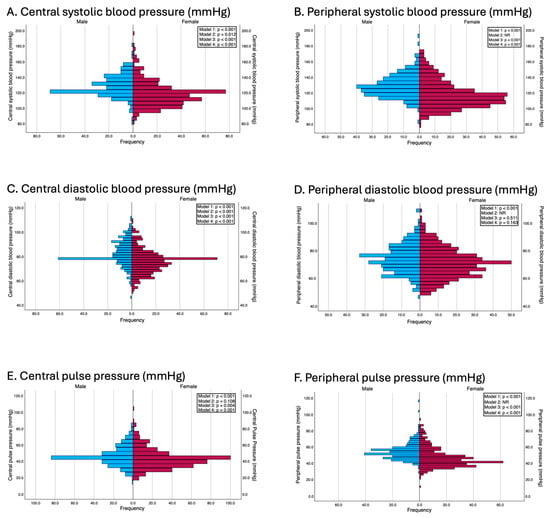
Figure 1
Open AccessArticle
Vo2peak, Ve/VCO2, and Cardiac Remodeling Correlate with Long-Term Cardiovascular Outcome in Heart Failure Patients
by
Antonio Pagliaro, Luna Cavigli, Roberta Molle, Elisabetta Iardino, Francesca Anselmi, Francesca Righini, Luca Martini, Valerio Zacà, Giulia Elena Mandoli, Maria Concetta Pastore, Marta Focardi, Matteo Cameli, Sonia Bernazzali, Massimo Maccherini, Marco Chiostri, Flavio D’Ascenzi and Serafina Valente
J. Cardiovasc. Dev. Dis. 2025, 12(5), 174; https://doi.org/10.3390/jcdd12050174 - 2 May 2025
Abstract
►▼
Show Figures
Accurate prognostic stratification in patients with chronic heart failure and reduced ejection fraction (HFrEF) remains a significant clinical challenge. Many different parameters, including left ventricular (LV) and right ventricular (RV) function and cardiopulmonary exercise testing (CPET) parameters, are available in the literature. LV
[...] Read more.
Accurate prognostic stratification in patients with chronic heart failure and reduced ejection fraction (HFrEF) remains a significant clinical challenge. Many different parameters, including left ventricular (LV) and right ventricular (RV) function and cardiopulmonary exercise testing (CPET) parameters, are available in the literature. LV ejection fraction (LVEF) is the most used parameter in clinical practice. This study aimed to analyze CPET and echocardiographic data in patients under evaluation for heart transplantation (HTx) to identify the parameter that best correlates with cardiac events. Methods and Results. Echocardiography and CPET were performed in patients with HFrEF under evaluation for HTx. The population comprised 170 patients (mean age: 55 ± 9 years; 88% male; non-ischemic etiology: 63%). LVEF was 30.4 ± 7.6%, peak oxygen uptake (Vo2peak) was 17.08 ± 4.6 mL/Kg/min; minute ventilation (VE)/carbon dioxide production (Vco2) slope was 34.8 ± 8.7. During a follow-up of 4 ± 1 years, 37 hospitalizations, 4 deaths, 14 HTx, and 5 LV assist device implantation occurred. Patients who experienced major events had a lower Vo2peak (p < 0.005), higher VE/Vco2 slope (p < 0.005), greater LV end-systolic diameter (p < 0.005), and RV end-diastolic diameter (p < 0.005) than patients without events. Conversely, LVEF did not differ between these two groups. VE/Vco2 slope and RV dimensions significantly correlated with hard cardiac events (p = 0.019 and p = 0.008, respectively). Conclusions. In patients with HFrEF, parameters quantifying the system reserve (i.e., Vo2peak and VE/Vco2 slope) and those demonstrating advanced biventricular remodeling may help stratify the risk of cardiac events. Conversely, LVEF showed a limited prognostic value in this setting.
Full article
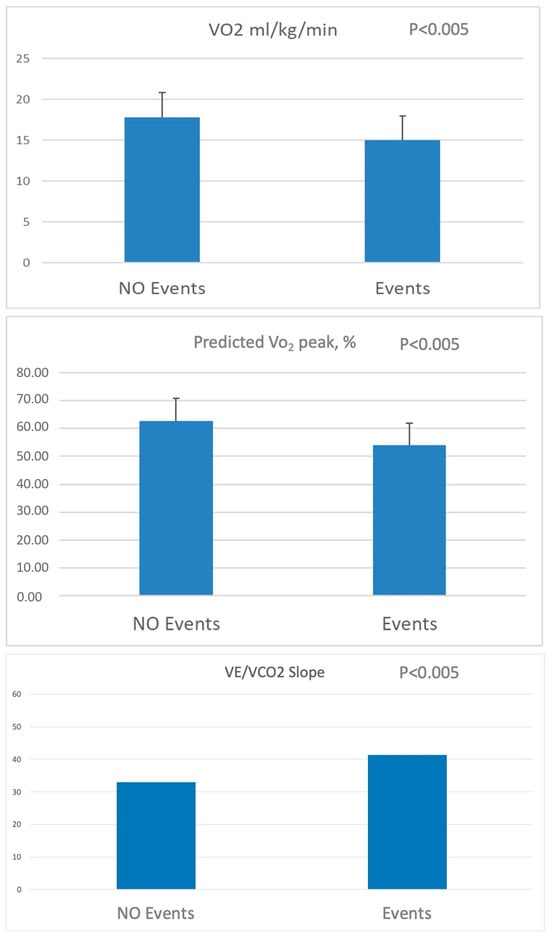
Figure 1
Open AccessArticle
Patients with Gastrointestinal Bleeding and Atrial Fibrillation: Potential Ideal Target for Epicardial Appendage Occlusion
by
Stefano Branzoli, Massimiliano Marini, Domenico Catanzariti, Cecilia Pravadelli, Luigi Pannone, Giovanni D’Onghia, Mauro Fantinel, Fabrizio Guarracini, Gaia Franceschini, Mirco Zadro, Giulia Baroni, Silvia Casagrande, Donatella Ottaviani, Renato Turco, Serena Nicolussi Paolaz, Luciano Annicchiarico, Francesco Corsini, Roberto Rordorf, Kausilia Krishnadath, Flavia Ravelli, Carlo de Asmundis and Mark La Meiradd
Show full author list
remove
Hide full author list
J. Cardiovasc. Dev. Dis. 2025, 12(5), 173; https://doi.org/10.3390/jcdd12050173 - 1 May 2025
Abstract
Background: Gastrointestinal bleeding in patients with atrial fibrillation is an indication for left appendage occlusion. All endovascular devices mandate antithrombotic therapies: rebleeding risk remains an issue. To date, there are no reports on gastrointestinal rebleeding and stroke prevention by left appendage occlusion without
[...] Read more.
Background: Gastrointestinal bleeding in patients with atrial fibrillation is an indication for left appendage occlusion. All endovascular devices mandate antithrombotic therapies: rebleeding risk remains an issue. To date, there are no reports on gastrointestinal rebleeding and stroke prevention by left appendage occlusion without any antithrombotic therapy in this category of patients. Methods: A total of 129 patients (male 85, mean age 76.6 ± 7.1, CHA2DS2Vasc 3.8 ± 1.5, HASBLED 3.3 ± 1.0; upper GI bleeding 10%, lower GI bleeding 86%, obscure occult 4.6%, on NOACS full dose 77.5%, NOACs reduced dose 13.1%, on anti-vitamin K 9.3%) with atrial fibrillation and history of repetitive gastrointestinal bleeding from ten centers underwent standalone thoracoscopic epicardial appendage closure without antithrombotic therapy for the entire follow up. Results: The observed bleeding rate was 0.91 events per year, equivalent to a relative risk of RR = 0.17 (p = 0.02) and a relative risk reduction (RRR) of 83%. The observed relative risk of stroke was 0.91 events per year, with a relative risk of RR = 0.19 (p = 0.03) and a relative risk reduction (RRR) of 81%. Conclusion: Standalone epicardial appendage occlusion without antithrombotic therapy in patients with repetitive gastrointestinal bleeding is safe and promising when rebleeding and stroke risk reduction need to be optimized.
Full article
(This article belongs to the Special Issue Hybrid Ablation of the Atrial Fibrillation)
►▼
Show Figures

Graphical abstract
Open AccessArticle
Subclinical Cardiac Involvement in Asymptomatic ATTR Mutation Carriers: Insights from Cardiac MRI, Myocardial Strain, and Mapping Techniques
by
Luca Conia, Daria Filatova, Giacomo Pambianchi, Livia Marchitelli, Giulia Cundari, Giuseppe Stancanelli, Maria Alfarano, Giulia Marchionni, Cristina Chimenti, Carlo Catalano and Nicola Galea
J. Cardiovasc. Dev. Dis. 2025, 12(5), 172; https://doi.org/10.3390/jcdd12050172 - 1 May 2025
Abstract
►▼
Show Figures
Transthyretin cardiac amyloidosis (ATTR-CA) leads to myocardial infiltration, affecting prognosis and survival. Diagnosing early-stage ATTR-CA remains challenging due to its subtle manifestations. This study investigates subclinical myocardial alterations in asymptomatic ATTR mutation carriers (ATTR-MC) using advanced cardiac magnetic resonance (CMR) techniques, including T1
[...] Read more.
Transthyretin cardiac amyloidosis (ATTR-CA) leads to myocardial infiltration, affecting prognosis and survival. Diagnosing early-stage ATTR-CA remains challenging due to its subtle manifestations. This study investigates subclinical myocardial alterations in asymptomatic ATTR mutation carriers (ATTR-MC) using advanced cardiac magnetic resonance (CMR) techniques, including T1 mapping and myocardial strain analysis. A retrospective cohort of 60 subjects was analyzed, comprising 20 ATTR-CA patients, 20 asymptomatic ATTR-MC, and 20 controls. Standard CMR parameters were compared alongside myocardial strain analysis. Results indicated that despite preserved ejection fraction and myocardial morphology, ATTR-MC exhibited significantly impaired left ventricular global longitudinal strain (LV GLS), left atrial reservoir, conduit, and booster pump strain (LA RS, CS, and BPS) compared to controls. However, native T1 and extracellular volume (ECV) values remained within normal ranges, distinguishing early dysfunction from overt amyloid deposition seen in ATTR-CA. These findings suggest that myocardial strain analysis could serve as an early biomarker for subclinical ATTR-CA, offering a potential target for selecting patients who may benefit from early intervention. Implementing CMR-derived strain parameters in clinical practice may improve risk stratification and timely therapeutic decisions in ATTR-MC.
Full article
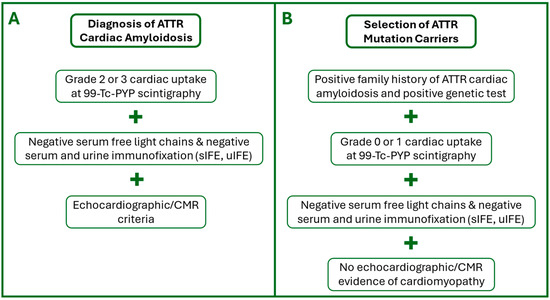
Figure 1
Open AccessReview
Non-Traditional Cardiovascular Risk Factors: Tailored Assessment and Clinical Implications
by
Francesco Perone, Marco Bernardi, Luigi Spadafora, Matteo Betti, Stefano Cacciatore, Francesco Saia, Federica Fogacci, Vikash Jaiswal, Elad Asher, Francesco Paneni, Salvatore De Rosa, Maciej Banach, Giuseppe Biondi Zoccai and Pierre Sabouret
J. Cardiovasc. Dev. Dis. 2025, 12(5), 171; https://doi.org/10.3390/jcdd12050171 - 28 Apr 2025
Abstract
Non-traditional cardiovascular risk factors (RFs) are increasingly emerging as important modifiers of cardiovascular risk (CVR), offering insights beyond traditional metrics like hypertension, diabetes, and dyslipidemia. These include novel biomarkers, chronic conditions (e.g., chronic kidney disease and chronic obstructive pulmonary disease), environmental exposures, chronic
[...] Read more.
Non-traditional cardiovascular risk factors (RFs) are increasingly emerging as important modifiers of cardiovascular risk (CVR), offering insights beyond traditional metrics like hypertension, diabetes, and dyslipidemia. These include novel biomarkers, chronic conditions (e.g., chronic kidney disease and chronic obstructive pulmonary disease), environmental exposures, chronic inflammation, infections, psychosocial factors, and sex-specific conditions, all of which influence the prediction, management, and outcomes of cardiovascular disease (CVD). These additional RFs may impact on CVD prediction and add valid information during tailored patient assessment and management. Therefore, a careful assessment of both traditional and non-traditional cardiovascular RFs, with a personalized treatment, could dramatically reduce the total CVD burden. Nevertheless, further research is needed to precisely estimate the magnitude of their impact as risk and prognosis modifiers in order to be included in future risk charts. This review provides a critical analysis of non-traditional RFs, their pathophysiological mechanisms, and their implications for personalized care. Integrating these factors into CVR assessment can reclassify patient risk categories, optimize therapeutic strategies, and improve prognosis. However, further research is needed to refine their inclusion in risk charts and evaluate their impact on public health outcomes. A tailored, multidisciplinary approach is essential to reduce the burden of CVD and associated mortality.
Full article
(This article belongs to the Special Issue Cardiovascular Risk Factors: Focus on Epidemiology and Clinical Consequences)
►▼
Show Figures

Graphical abstract
Open AccessReview
Treatment Options in Isolated Atherosclerotic Popliteal Artery Disease
by
Stephanie Rassam and Raphaël Coscas
J. Cardiovasc. Dev. Dis. 2025, 12(5), 170; https://doi.org/10.3390/jcdd12050170 - 27 Apr 2025
Abstract
Isolated popliteal artery (PA) lesions account for around 1% of lower limb revascularisations. Whatever treatment modality is chosen, the effects on the artery during knee flexion must be considered. The decision between a less invasive endovascular treatment (EVT) and traditional open interventions remains
[...] Read more.
Isolated popliteal artery (PA) lesions account for around 1% of lower limb revascularisations. Whatever treatment modality is chosen, the effects on the artery during knee flexion must be considered. The decision between a less invasive endovascular treatment (EVT) and traditional open interventions remains complex due to anatomical, biomechanical, and pathophysiological considerations and the varying aetiology of PA lesions. Available data remain limited, making it more challenging to decide on the most effective and durable treatment approach. Nowadays, when EVT is planned, several non-stenting techniques are available, making a “leave-nothing-behind strategy” possible after adequate vessel preparation. If stent implantation is required, self-expanding vasculomimetic stents are preferred due to their ability to provide flexibility and resist compression during motion. This narrative review discusses the available treatment options, challenges, and specific considerations for isolated PA disease, highlighting the need for large-scale, high-quality studies to provide more robust evidence on the optimal treatment approach.
Full article
(This article belongs to the Special Issue Management and Challenges in Peripheral Arterial Disease)
►▼
Show Figures
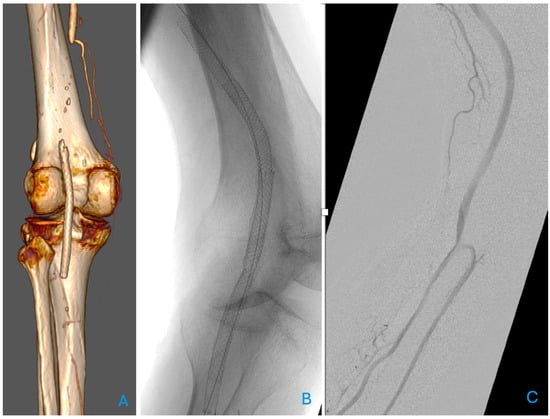
Figure 1
Open AccessReview
Lipoprotein(a): Assessing the Current Knowledge and Gaps in Screening and Treatment—A Narrative Review
by
Octavian Amaritei, Oana Laura Mierlan, Cristian Gutu and Gabriela Gurau
J. Cardiovasc. Dev. Dis. 2025, 12(5), 169; https://doi.org/10.3390/jcdd12050169 - 26 Apr 2025
Abstract
Atherosclerotic cardiovascular disease (ASCVD) has long been screened using the traditional lipid profile, mainly focusing on LDL cholesterol. However, despite growing evidence supporting lipoprotein(a) [Lp(a)] as an independent risk factor involved in atherosclerosis, its clinical use remains limited. This review examines the reasons
[...] Read more.
Atherosclerotic cardiovascular disease (ASCVD) has long been screened using the traditional lipid profile, mainly focusing on LDL cholesterol. However, despite growing evidence supporting lipoprotein(a) [Lp(a)] as an independent risk factor involved in atherosclerosis, its clinical use remains limited. This review examines the reasons behind the limited use of Lp(a) screening in clinical practice, assessing its role in cardiovascular risk, comparing it to traditional lipid markers and evaluating current assessment methods. It also explores existing and emerging treatments, including gene-silencing therapies, for managing elevated Lp(a) levels. One in four clinicians does not routinely check Lp(a) levels, which proves a lack of awareness amongst them. The reasons for that are implied to be that the cost is too high and that available treatments are scarce. The traditional lipid profile, including LDL, high-density lipoprotein (HDL) and triglycerides, continues to be the gold standard for CV risk assessment. One limitation of using Lp(a) in clinical practice is the significant variability in apo(a) sizes, which results from the presence of multiple isoforms determined by the number of kringle domains. This structural diversity poses challenges in standardizing measurement methods, affecting the accuracy and comparability of results. While statins have a minimal impact on Lp(a), PCSK9-i lowers its levels by 20–25%, although this class is not prescribed primarily for this reason. Lastly, gene-silencing therapies, which achieve the greatest reduction in Lp(a) levels, are still in phase III trials, and there is still a need to examine whether this reduction translates into CV benefits. These limitations should not discourage further research, because ASCVD’s complexity requires a more tailored approach. Current lipid-lowering therapy still fails in a minority of cases, as evidenced by new-onset cardiovascular events in patients with well-controlled LDL levels. There is a need for future interventional studies to assess whether a reduction in Lp(a) by PCSK9-i really translates into CV benefits, independent of LDL.
Full article
(This article belongs to the Topic Biomarkers in Cardiovascular Disease—Chances and Risks, 2nd Volume)
►▼
Show Figures
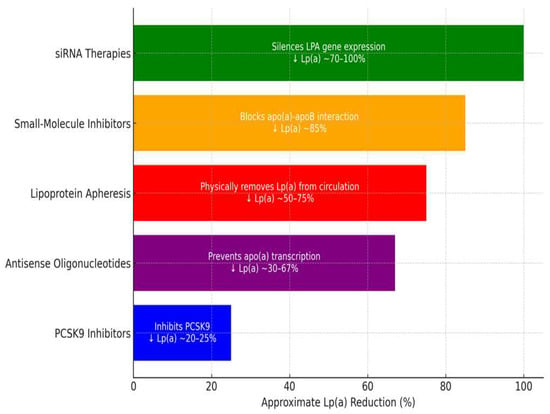
Figure 1
Open AccessReview
Predicting the Outcomes of External Direct Current Cardioversion for Atrial Fibrillation: A Narrative Review of Current Evidence
by
Ibrahim Antoun, Georgia R. Layton, Ahmed Abdelrazik, Mahmoud Eldesouky, Sherif Altoukhy, Mustafa Zakkar, Riyaz Somani and G. André Ng
J. Cardiovasc. Dev. Dis. 2025, 12(5), 168; https://doi.org/10.3390/jcdd12050168 - 25 Apr 2025
Abstract
Atrial fibrillation (AF) is the most common sustained arrhythmia associated with significant morbidity and mortality. External direct current cardioversion (DCCV) is a cornerstone intervention for rhythm control in AF; however, its success is influenced by various patient-specific and procedural factors. This review examines
[...] Read more.
Atrial fibrillation (AF) is the most common sustained arrhythmia associated with significant morbidity and mortality. External direct current cardioversion (DCCV) is a cornerstone intervention for rhythm control in AF; however, its success is influenced by various patient-specific and procedural factors. This review examines the predictors of DCCV success and AF recurrence with specific focus upon demographics, biochemical, cardiovascular imaging, and P-wave parameters and their likely ability to predict procedural outcomes. Demographic factors such as age, sex, and comorbidities influence DCCV outcomes, with prolonged AF duration, obesity, and heart failure being associated with higher failure rates. Elevated biochemical markers of inflammation and fibrosis, including C-reactive protein, galectin-3, and Type III procollagen-N-peptide, were predictive of poor outcomes. Imaging parameters, particularly left atrial (LA) volume and strain, emerged as critical indicators of atrial remodelling and DCCV failure. Increased P-wave duration and dispersion on electrocardiography were associated with an increased risk of recurrence. Biphasic waveforms and antiarrhythmic drugs, such as amiodarone and flecainide, improved cardioversion success. The predictors of DCCV success and recurrence reflect the interplay of structural, biochemical, and electrical remodelling in AF. Integrating these parameters into clinical practice can guide individualised patient management and improve outcomes. Further research is needed to validate these predictors and enhance precision medicine approaches in DCCV.
Full article
(This article belongs to the Special Issue Extensive Approach to Atrial Fibrillation: Background and Future Perspectives)
►▼
Show Figures
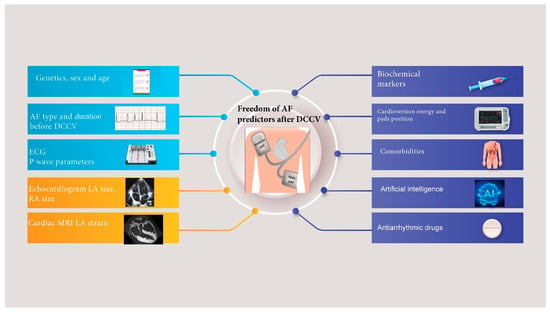
Figure 1
Open AccessArticle
Beyond the Echo: Is Comprehensive Vascular Exploration Valuable in Cases of Non-Syndromic Thoracic Aortic Aneurysms or Bicuspid Aortic Valve?
by
Austin Saugstad, Srekar Ravi, George Bcharah, Christine E. Firth, Hend Bcharah, Hussein Abdul Nabi, Hoang Nhat Pham, Ramzi Ibrahim, Sant J. Kumar, Mahmoud Abdelnabi, Linnea M. Baudhuin, Yuxiang Wang, Mayowa A. Osundiji and Fadi Shamoun
J. Cardiovasc. Dev. Dis. 2025, 12(5), 167; https://doi.org/10.3390/jcdd12050167 - 24 Apr 2025
Abstract
Bicuspid aortic valve (BAV) and thoracic aortic aneurysms and dissections (TAAD) are recognized in syndromic connective tissue diseases (CTD), but most cases occur sporadically. The extent to which non-syndromic BAV or TAAD predisposes to additional arteriopathies, particularly in younger individuals, remains unclear. We
[...] Read more.
Bicuspid aortic valve (BAV) and thoracic aortic aneurysms and dissections (TAAD) are recognized in syndromic connective tissue diseases (CTD), but most cases occur sporadically. The extent to which non-syndromic BAV or TAAD predisposes to additional arteriopathies, particularly in younger individuals, remains unclear. We retrospectively analyzed 1438 patients (mean age = 48.0, 67.7% female), excluding those with CTDs. Participants were ≤60 years old and categorized by the presence of BAV and/or TAAD. We examined co-existing arterial pathologies, including fibromuscular dysplasia, spontaneous coronary artery dissection, abdominal aortic aneurysms (AAA), mesenteric, peripheral extremity, and carotid/cerebral arteriopathies. Overall, 44.6% had either BAV or TAAD, and 27.2% had multiple arteriopathies. While vascular diseases were frequently noted, odds ratios demonstrated no significantly increased risk of extra-aortic arteriopathies in the BAV or TAAD cohorts. AAA exhibited a non-significant trend toward higher prevalence in TAAD patients. These findings support current guidelines recommending targeted imaging (transthoracic echocardiography of the aortic root and ascending aorta) over comprehensive “head-to-pelvis” screening for non-syndromic BAV or TAAD patients without additional risk factors. Ongoing genetic analyses may elucidate whether particular variants predispose to multi-site aneurysms or dissections. Consequently, targeted surveillance remains appropriate, with broader imaging reserved for patients with genetic or clinical indicators of higher risk.
Full article
(This article belongs to the Special Issue Models and Methods for Computational Cardiology: 2nd Edition)
►▼
Show Figures
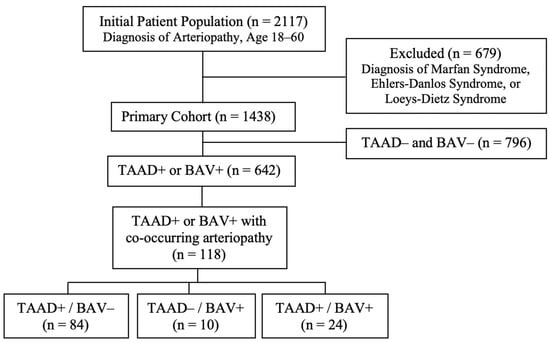
Figure 1
Open AccessArticle
Impact of the Pre-Operative Standardized Nutritional Protocol in Infants with Congenital Heart Disease (CHD)
by
Patrick Zacharias, Jenna Blinci, Ruthie Shenoy, Jesse Lee and Yogen Singh
J. Cardiovasc. Dev. Dis. 2025, 12(5), 166; https://doi.org/10.3390/jcdd12050166 - 23 Apr 2025
Abstract
Neonates with congenital heart disease (CHD) are at increased risk of growth failure and necrotizing enterocolitis (NEC), making nutritional management crucial for their outcomes. This study aimed to evaluate the impact of a standardized feeding protocol on growth and NEC incidence in CHD
[...] Read more.
Neonates with congenital heart disease (CHD) are at increased risk of growth failure and necrotizing enterocolitis (NEC), making nutritional management crucial for their outcomes. This study aimed to evaluate the impact of a standardized feeding protocol on growth and NEC incidence in CHD infants. A retrospective study was conducted at a tertiary care center, including neonates diagnosed with CHDs from January 2020 to March 2023. Patients were divided into two groups: those receiving the standardized feeding protocol (protocol group, n = 12) and those who did not (non-protocol group, n = 39). Key metrics such as growth velocity at discharge, anthropometric z score changes at discharge since birth, days to full enteral feeds, NEC incidence, and length of stay were analyzed. Statistical comparisons were made using two-tailed Mann-Whitney test and chi-squared tests. The NEC incidence was 10% in the non-protocol group and 0% in the protocol group (p = 0.25), with no significant difference. All anthropometric growth markers at the time of discharge differed between the groups, with the protocol group demonstrating favorable outcomes across all measured variables; however, these differences did not reach statistical significance. The time to reach full enteral feeds was shorter (8.5 days vs. 11 days; p = 0.22), and length of stay was shorter in the protocol group (17 days vs. 23 days; p = 0.14), although neither was statistically significant. Although the protocol group showed trends towards reduced NEC and improved growth, this was not statistically significant, which could have been because of the small sample size. Our findings suggest that a standardized feeding protocol may reduce the time to full enteral feeds and hospital stay, but further large-scale studies are needed to confirm these results.
Full article
(This article belongs to the Section Pediatric Cardiology and Congenital Heart Disease)
►▼
Show Figures
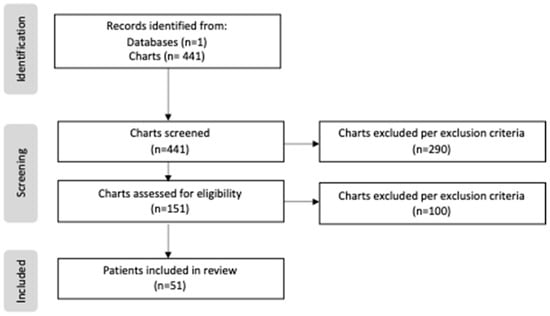
Figure 1
Open AccessArticle
Early Experience with Acuson AcuNav 4D-ICE to Guide Transcatheter Tricuspid Edge-to-Edge Repair: 4D Intracardiac Echocardiography Compared to Transesophageal Echocardiography
by
Matteo Biroli, Fabio Fazzari, Francesco Cannata, Vincenzo De Peppo, Cristina Ferrari, Carlo Maria Giacari, Marco Gennari, Paolo Olivares, Manuela Muratori, Mauro Pepi, Gianluca Pontone and Federico De Marco
J. Cardiovasc. Dev. Dis. 2025, 12(5), 165; https://doi.org/10.3390/jcdd12050165 - 23 Apr 2025
Abstract
Tricuspid regurgitation is a common valvular disease associated with high morbidity and mortality if left untreated. While surgery has been the standard intervention, transcatheter tricuspid edge-to-edge repair (T-TEER) has emerged as an alternative for high-risk surgical candidates. Transesophageal echocardiography (TEE) is the gold-standard
[...] Read more.
Tricuspid regurgitation is a common valvular disease associated with high morbidity and mortality if left untreated. While surgery has been the standard intervention, transcatheter tricuspid edge-to-edge repair (T-TEER) has emerged as an alternative for high-risk surgical candidates. Transesophageal echocardiography (TEE) is the gold-standard imaging modality for guiding T-TEER due to its high spatial and temporal resolution. However, it requires general anesthesia and esophageal intubation, limiting its use in certain patients. Additionally, TEE image quality may be compromised by anterior structure shadowing, which is common in T-TEER. The development of 4D intracardiac echocardiography (ICE) offers real-time, three-dimensional imaging, potentially overcoming these limitations. This study compared TEE and Acuson AcuNav 4D-ICE in guiding T-TEER in ten high-risk patients across eight crucial procedural steps. ICE showed optimal feasibility in key procedural steps, including valve steering and leaflet grasping, due to its proximity to target structures, minimizing shadowing artifacts. Both modalities performed equally in lesion identification and residual regurgitation assessment and achieved non-statistically different results in most quantitative measurements. This study supports the integration of 4D-ICE into T-TEER procedures, particularly for patients unsuited for TEE or with complex TEE windows. Its real-time imaging, reduced invasiveness, and feasibility in critical steps highlight its potential as a viable alternative or complement to TEE. Further multicenter studies are needed to validate its role, optimize protocols, and evaluate long-term outcomes in 4D-ICE-guided T-TEER.
Full article
(This article belongs to the Section Imaging)
►▼
Show Figures
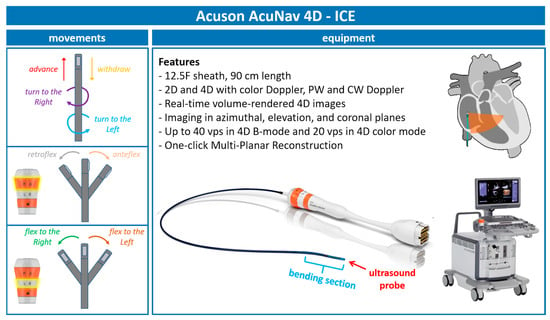
Figure 1
Open AccessArticle
Riding the Highs and Lows of the Conduction System Pacing Wave—Our Experience
by
Hooi Khee Teo, Yi Yi Chua, Julian Cheong Kiat Tay, Xuanming Pung, Jonathan Wei Sheng Ong, Germaine Jie Min Loo, Eric Tien Siang Lim, Kah Leng Ho, Daniel Thuan Tee Chong and Chi Keong Ching
J. Cardiovasc. Dev. Dis. 2025, 12(5), 164; https://doi.org/10.3390/jcdd12050164 - 22 Apr 2025
Abstract
Conduction system pacing started with His bundle pacing (HBP) and then rapidly switched gears into left bundle branch pacing (LBBP). We describe our center’s experience with LBBP using either lumenless leads (LLLs) or stylet-driven leads (SDLs). Patients who were admitted to two tertiary
[...] Read more.
Conduction system pacing started with His bundle pacing (HBP) and then rapidly switched gears into left bundle branch pacing (LBBP). We describe our center’s experience with LBBP using either lumenless leads (LLLs) or stylet-driven leads (SDLs). Patients who were admitted to two tertiary centers between 1 April 2021 and 30 June 2024 and met the guidelines for pacing were recruited and prospectively followed up. A total of 124 patients underwent permanent pacemaker (PPM) implantation using the LBBP technique with a mean follow-up of 19.7 ± 13.3 months. In total, 90 patients were implanted with LLLs and 34 with SDLs. There was no significant difference in the procedural time and final paced QRS duration, but fluoroscopy time was significantly longer in the SDLs (26.2 ± 17.7 min vs. 17.5 ± 13.0 min, respectively, p = 0.026). The on-table impedance values were also significantly higher in the LLLs, and this persisted throughout the follow-up. There were no differences in the rates of complications. The success of conduction system pacing implantation with SDLs and LLLs is comparable with reasonable safety and reliable outcomes. Good pre-implant patient selection will contribute to improved outcomes.
Full article
(This article belongs to the Special Issue Advances in Cardiac Pacing and Cardiac Resynchronisation Therapy)
►▼
Show Figures

Figure 1
Open AccessArticle
Impact of Simulated Vascular Aging and Heart Rate on Myocardial Efficiency: A Tale of Two Paradigms from In Silico Modelling
by
Lawrence J. Mulligan, Julian Thrash, Ludmil Mitrev, Daniel Ewert and Jeffrey C. Hill
J. Cardiovasc. Dev. Dis. 2025, 12(5), 163; https://doi.org/10.3390/jcdd12050163 - 22 Apr 2025
Abstract
Introduction: Vascular aging is associated with a loss of aortic compliance (CA), which results in increased left ventricular pressure–volume area (PVA), stroke work (SW) and myocardial oxygen consumption (MVO2). Myocardial efficiency (MyoEff) is derived from the PVA and MVO
[...] Read more.
Introduction: Vascular aging is associated with a loss of aortic compliance (CA), which results in increased left ventricular pressure–volume area (PVA), stroke work (SW) and myocardial oxygen consumption (MVO2). Myocardial efficiency (MyoEff) is derived from the PVA and MVO2 construct, which includes potential energy (PE). However, the SW/MVO2 ratio does not include PE and provides a more accurate physiologic measure. Methods: We used a modified computational model (CM) to assess PVA and SW and calculate MVO2 using a pressure-work index (e MVO2), to derive MyoEff–PVA and MyoEff–SW metrics. Phase I evaluated five levels of human CA from normal (N) to stiff (S) at 80 bpm, and Phase II evaluated two levels of CA (N and S) at three heart rates (60, 100, and 140 bpm). Results: During Phase I, MyoEff–PVA increased from 20.7 to 31.2%, and MyoEff–SW increased from 14.8 to 18.9%. In Phase II, during the N setting coupled with increases in the heart rate, the MyoEff–PVA decreased from 29.4 to 14.8 to 9.5%; the MyoEff–SW also decreased from 22.5 to 10.3 to 5.9%. As expected, during the S setting, MyoEff–PVA decreased from 45.5 to 22.9 to 14.8; a similar effect occurred with the MyoEff–SW, demonstrating a decrease from 29.9 to 13.9 to 7.9%, respectively. Conclusions: The CM provided insights into a simple and clinically relevant calculation for assessing MyoEff. The agreement on the CM metrics aligns with studies conducted previously in the clinical setting.
Full article
(This article belongs to the Special Issue Models and Methods for Computational Cardiology: 2nd Edition)
►▼
Show Figures

Figure 1
Open AccessArticle
Sarcopenia in Patients with Chronic Thromboembolic Pulmonary Hypertension
by
Steven Hopkins, Jillian Hall, Hollie Saunders, Riyaz Bashir, Vladimir Lakhter, Anjali Vaidya, Ahmed Sadek, Paul Forfia and Estefania Oliveros
J. Cardiovasc. Dev. Dis. 2025, 12(5), 162; https://doi.org/10.3390/jcdd12050162 - 22 Apr 2025
Abstract
►▼
Show Figures
Background: Sarcopenia, or loss of skeletal muscle mass, has been associated with poor outcomes (e.g., functional decline, increased mortality, and low quality of life), but its role in CTEPH remains unclear. The psoas muscle index (PMI) is a validated measure of sarcopenia. We
[...] Read more.
Background: Sarcopenia, or loss of skeletal muscle mass, has been associated with poor outcomes (e.g., functional decline, increased mortality, and low quality of life), but its role in CTEPH remains unclear. The psoas muscle index (PMI) is a validated measure of sarcopenia. We investigated the incidence of sarcopenia using PMI in CTEPH. Methods: Retrospective analysis of a single-center cohort of patients with CTEPH with an available computed tomography of the abdomen and pelvis (CTAP). PMI was measured at the L3 level of the CTAP and was then calculated using the formula (left psoas area + right psoas area/height2). Patients in the first quartile of PMI were classified as sarcopenic. Results: We reviewed 558 patients with CTEPH, and 97 patients had an available CTAP before intervention. Sarcopenia was identified in 26 (24.8%) of the patients and was associated with worse baseline functional status (p = 0.008), higher mean pulmonary artery pressure (48 vs. 39 mmHg; p = 0.002), and higher pulmonary vascular resistance (9.9 vs. 6.8 WU; p = 0.013). Post-PTE, patients with sarcopenia exhibited longer intensive care unit (ICU) (9 vs. 4 days, p < 0.001) and overall hospital stays (24 vs. 11 days, p < 0.001), despite similar post-operative hemodynamics achieved compared to non-sarcopenic patients. Conclusions: CTEPH patients with sarcopenia have worse baseline functional class and hemodynamics. For those with sarcopenia requiring surgery, there is longer ICU and total hospitalization stays, but they achieve significant functional improvements and hemodynamics comparable to that of non-sarcopenic patients. Hence, the risk of longer perioperative hospitalization days is justified by the longer-term benefit of hemodynamic improvement. The use of PMI as part of routine pre-operative assessments could improve clinical decision-making in CTEPH patients undergoing surgical or medical intervention.
Full article

Graphical abstract
Open AccessArticle
Intravascular Imaging-Guided Versus Angiography-Guided Percutaneous Coronary Intervention in Patients with Non-ST-Segment Elevation Myocardial Infarction in the United States: Results from Big Data Analysis
by
Chayakrit Krittanawong, Song Peng Ang, Neil Sagar Maitra, Zhen Wang, Mahboob Alam, Hani Jneid and Samin Sharma
J. Cardiovasc. Dev. Dis. 2025, 12(4), 161; https://doi.org/10.3390/jcdd12040161 - 17 Apr 2025
Abstract
►▼
Show Figures
Non-ST-segment elevation myocardial infarction (NSTEMI) can be managed by ischemia guide strategies or early invasive strategies. Here, we present the findings of an updated contemporary analysis regarding the use of intracoronary imaging (ICI)-guided PCI versus angiography-guided PCI and in-hospital mortality in patients with
[...] Read more.
Non-ST-segment elevation myocardial infarction (NSTEMI) can be managed by ischemia guide strategies or early invasive strategies. Here, we present the findings of an updated contemporary analysis regarding the use of intracoronary imaging (ICI)-guided PCI versus angiography-guided PCI and in-hospital mortality in patients with NSTEMI in the United States using the NIS database from 2016 to 2021. ICI use increased by nearly threefold between 2016 and 2021, without a significant difference in in-hospital mortality, though interestingly, mortality rates compared with angiography guidance were similar and relatively low. In this study, the use of ICI was associated with lower adjusted odds of in-hospital mortality, cardiogenic shock, and cardiac arrest, but with a longer length of stay and cost of hospitalization.
Full article
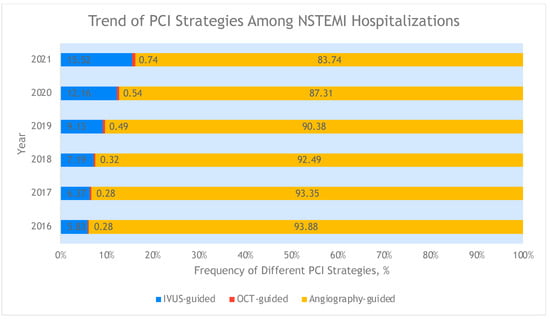
Figure 1
Open AccessArticle
Echocardiographic Predictors of Postoperative Atrial Fibrillation After Cardiac Surgery: Assessing Atrial Mechanics for Risk Stratification
by
Velimir Perić, Mlađan Golubović, Marija Stošić, Dragan Milić, Lela Lazović, Dalibor Stojanović, Milan Lazarević, Dejan Marković and Dragana Unić-Stojanović
J. Cardiovasc. Dev. Dis. 2025, 12(4), 160; https://doi.org/10.3390/jcdd12040160 - 17 Apr 2025
Abstract
Postoperative atrial fibrillation (POAF) is a common complication after cardiac surgery, increasing morbidity and healthcare costs. This study aimed to identify echocardiographic predictors of POAF to improve risk stratification. A total of 131 patients undergoing cardiac surgery were analyzed and divided into two
[...] Read more.
Postoperative atrial fibrillation (POAF) is a common complication after cardiac surgery, increasing morbidity and healthcare costs. This study aimed to identify echocardiographic predictors of POAF to improve risk stratification. A total of 131 patients undergoing cardiac surgery were analyzed and divided into two groups based on POAF occurrence. Echocardiographic analysis showed that patients with POAF had larger left and right atrial dimensions and impaired atrial function. Prolonged total atrial conduction time (TACT), reduced atrial emptying volumes, and contractile function were more common in the POAF group. Univariable analysis identified LAEF (χ2 = 71.8, p < 0.001), LAKE (χ2 = 70.1, p < 0.001), RATEF (χ2 = 65.7, p < 0.001), and RAAEF (χ2 = 66.8, p < 0.001) as significant predictors of POAF, each with an area under the curve (AUC) greater than 0.89. In multivariable analysis, LAKE (OR = 0.27, p < 0.001), hypertension (OR = 11.87, p = 0.035), left ventricular ejection fraction (OR = 1.08, p = 0.020), and peripheral vascular disease (OR = 40.28, p = 0.002) were independent predictors. The final model showed a significant discriminatory ability (AUC = 0.94). LAKE and clinical factors remained independent predictors after adjustment.
Full article
(This article belongs to the Special Issue Heart Rhythm Disorders: Diagnosis, Treatment, and Management)
►▼
Show Figures

Figure 1
Open AccessReview
Coronary Computed Angiography and Coronary Artery Calcium Score for Preoperative Cardiovascular Risk Stratification in Patients Undergoing Noncardiac Surgery
by
Ioannis Kyriakoulis, Sriram S. Kumar, Georgios D. Lianos, Dimitrios Schizas and Damianos G. Kokkinidis
J. Cardiovasc. Dev. Dis. 2025, 12(4), 159; https://doi.org/10.3390/jcdd12040159 - 17 Apr 2025
Abstract
Perioperative and long-term postoperative major adverse cardiovascular events (MACE) are a leading cause of morbidity and mortality in patients undergoing noncardiac surgery. In selected high-risk patients, when information about cardiovascular status may influence surgical decisions, preoperative risk stratification is reasonable, with stress imaging
[...] Read more.
Perioperative and long-term postoperative major adverse cardiovascular events (MACE) are a leading cause of morbidity and mortality in patients undergoing noncardiac surgery. In selected high-risk patients, when information about cardiovascular status may influence surgical decisions, preoperative risk stratification is reasonable, with stress imaging being the preferred method. Coronary computed angiography (CCTA) and coronary artery calcium score (CACS) offer direct anatomical assessment of atherosclerotic coronary arteries and help gauge the extent and severity of coronary artery disease. Strong evidence supports that CCTA and CACS, either alone or in combination, are reliable methods for assessing the risk of both perioperative and long-term postoperative MACE, often demonstrating equal or superior prognostic performance compared to traditional imaging tools. Moreover, integrating CCTA or CACS into standard preoperative imaging protocols further enhances perioperative risk prediction and improves the ability to accurately stratify patients. Future research is needed to better define the role of CCTA and CACS in preoperative cardiovascular risk evaluation of patients undergoing noncardiac surgery.
Full article
(This article belongs to the Special Issue Clinical Applications of Cardiovascular Computed Tomography (CT))
►▼
Show Figures
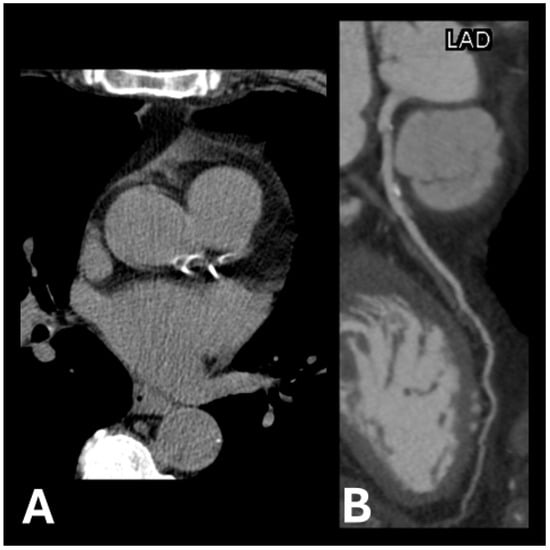
Figure 1

Journal Menu
► ▼ Journal Menu-
- JCDD Home
- Aims & Scope
- Editorial Board
- Reviewer Board
- Topical Advisory Panel
- Instructions for Authors
- Special Issues
- Topics
- Sections & Collections
- Article Processing Charge
- Indexing & Archiving
- Editor’s Choice Articles
- Most Cited & Viewed
- Journal Statistics
- Journal History
- Journal Awards
- Editorial Office
Journal Browser
► ▼ Journal BrowserHighly Accessed Articles
Latest Books
E-Mail Alert
News
Topics
Topic in
Antioxidants, Biomolecules, JCDD, Metabolites, Neurology International, Pharmaceutics
Tissue-Specific, Disease-Signatured Macrophages in Control of Redox and Antioxidation in Metabolic Diseases
Topic Editors: Xiangwei Xiao, Yingmei Feng, Zhiyong LeiDeadline: 5 July 2025
Topic in
Cardiogenetics, Hearts, JCDD, JCM, Medicina
Biomarkers in Cardiovascular Disease—Chances and Risks, 2nd Volume
Topic Editors: Alexander E. Berezin, Michael LichtenauerDeadline: 31 December 2025
Topic in
Diagnostics, Geriatrics, JCDD, Medicina
New Research on Atrial Fibrillation
Topic Editors: Michele Magnocavallo, Domenico G. Della Rocca, Stefano Bianchi, Pietro Rossi, Antonio BisignaniDeadline: 31 March 2026
Topic in
Cardiogenetics, Hearts, JCDD, JCM
Adult Congenital Heart Disease: Advances in Diagnosis, Surgery, and Lifelong Care
Topic Editors: Satoshi Akagi, Jin Young SongDeadline: 30 June 2026

Conferences
Special Issues
Special Issue in
JCDD
Pulmonary Hypertension: Current Status of Diagnosis and Treatment
Guest Editors: Roxana Sulica, Himanshu DeshwalDeadline: 25 May 2025
Special Issue in
JCDD
Effect of Lipids and Lipoproteins on Atherosclerosis
Guest Editors: Maciej Banach, Joanna Lewek, Bożena SosnowskaDeadline: 31 May 2025
Special Issue in
JCDD
Ventricular Arrhythmias: Epidemiology, Diagnosis and Treatment
Guest Editors: Antonio Di Monaco, Massimo GrimaldiDeadline: 31 May 2025
Special Issue in
JCDD
Advances in Cardiovascular Imaging—Computed Tomography (CT) Focus Issue
Guest Editor: Gudrun FeuchtnerDeadline: 31 May 2025
Topical Collections
Topical Collection in
JCDD
Current Challenges in Heart Failure and Cardiac Transplantation
Collection Editors: Rasmus Rivinius, Daniel Oehler, Andreas J. Rieth, Andreas Doesch





